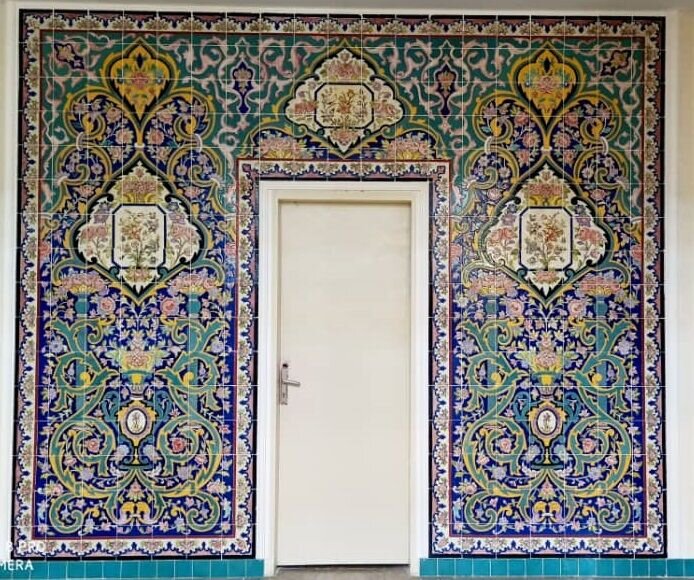Artists make replicas of tiles covering UNESCO-designated palace

TEHRAN – A team of Iranian artists and artisans has created exact replicas of “Haft-Rang” tiles which cover parts of the UNESCO-registered Golestan Palace in downtown Tehran.
“Kashikari (Tiling) is one of the original arts of Iran, and the best example of which can be found in the Golestan Palace,” Soheila Naqizadeh, who leads the team of artists, said on Sunday, IRNA reported.
“Designs and motifs of Qajar-era (1789–1925) ties were scrutinized by members of the team to produce prototypes and later replicas, using watercolor style…,” Naqizadeh explained.
Arrays of intricate tilework can be found in ornaments of many architectures and especially mosques, shrines, palaces, and mansions across the country. There is evidence that the beginning of tile-work is traced back to the Achaemenid era (c. 550-330).
The term Haft-Rang (meaning seven-colored, also known specifically as Cuerda Seca OR Dry Cord) tiles were first used by a royal historian of Ilkhanate to describe the technic of painting on glaze and is still used today, according to Visit Iran.
The number seven however does not refer to the exact number of colors, because in this technic it is the composition and relation of colors that matters the most. Today, Haft Rang tiles are made in 15x15 cm in seven colors: blue, turquoise, red, yellow, fawn, black, and white. This technic prevents the colors to be mixed into each other because they are separated by lines of a special kind of ink with oil and magnesium components.
A destination for domestic and international travelers, Golestan Palace is located in the heart and historic core of Tehran. The palace complex is one of the oldest in the Iranian capital, originally built during the Safavid dynasty (1501–1736) in the historic walled city.
At present, the Golestan Palace complex consists of eight key palace structures mostly used as museums and the eponymous gardens, a green shared center of the complex, surrounded by an outer wall with gates. UNESCO has it that the complex exemplifies architectural and artistic achievements of the Qajar era including the introduction of European motifs and styles into Persian arts.
AFM
